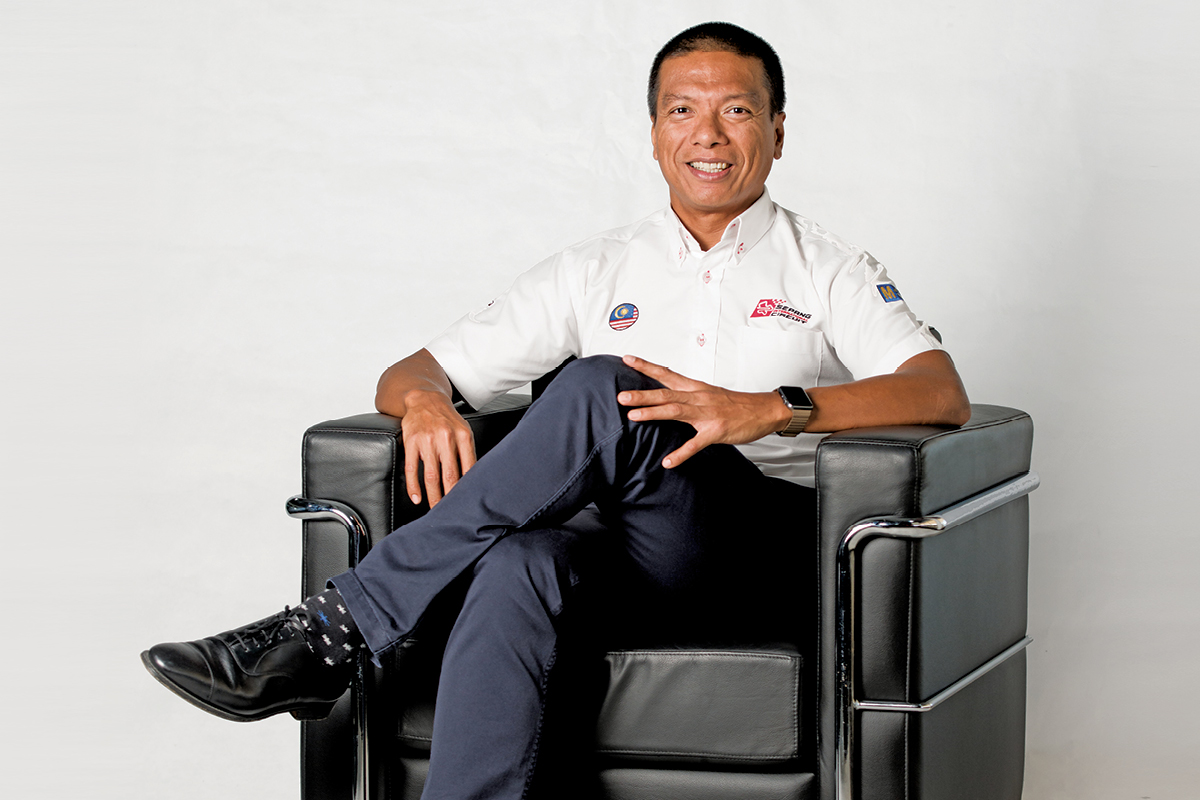When Ahmad Razlan Ahmad Razali took up the job of managing Malaysia’s Sepang International Circuit, it came with one condition – no more racing. Razlan had been a fan of the sport since the country regained a grand prix event in 1999, and later raced Porsches and motorbikes. Hanging up the racing gloves was thus something of a trade-off, though one he was prepared to make.
“It’s a dream job, to go from being passionate about racing as a hobby to managing motor sports for the country as a career, that’s good enough for me. I’m surrounded by racing every day now, so I don’t miss it as much.”

A state of preparedness
When the Malaysian government made the decision that hosting Formula One meets at Sepang was no longer cost-effective, some feared the track would turn into a white elephant. But Razlan says losing the event that contributed to around 30% of the circuit’s revenue was one Sepang was prepared for. “We anticipated that F1 would end soon in Malaysia two to three years ago, so we had already taken steps to close the gap.”
With these measures in place, the gap between the circuit’s current revenue and that of its F1 heyday is only around 12%. Under Razlan’s leadership, the circuit has introduced a suite of new revenue streams with the aim of reducing the gap between its current and previous F1-bolstered revenue to zero. The space is now also used for corporate events, circuit tours and tourism alongside motorsports events. The circuit will install floodlights around the track by July, opening up 6–8 hours of racing and revenue generation each night.
Over the past few years, Razlan says the track has been in use more than 90% of the time available and the floodlights will only see this number rise. The circuit is still an important hub for motorcycle racing, hosting an annual MotoGP event and numerous domestic races.
Razlan’s role also includes heading up the Motorsports Association of Malaysia. He is focused on broadening the circuit’s customer base beyond elite racing, however, and has introduced initiatives such as the Driving Experience Centre that allows visitors to tackle the challenging course in a variety of vehicles. The course specifications are based on renowned high-end manufacturers’ Driving Experience Centres worldwide.
The facility is expected to eventually contribute to around 10-15% of the circuit’s revenue. Razlan says there is also considerable scope to utilise other areas of the 303-hectare site. “Property development is important to us,” he begins. “We are looking at non-motor sport revenue, including hotels, commercial, education and a theme park. That will give us exponential growth in the next five to 10 years.”

Repositioning the circuit
Repositioning the circuit as an edutainment destination may be particularly lucrative. Razlan says it has the potential to offer both tourist attractions and hands-on education in mechanical engineering and the technical aspects of motor sport, the latter in collaboration with a local university. It’s a business model already fruitfully followed by Japan’s Suzuka Circuit, which offers racing-themed hotels, a family water park and go-karting as well as its regular calendar of racing events. “That is where we want Sepang International Circuit to be, a fully integrated daily edutainment destination.”
With a background spanning business development, corporate finance, construction, information technology and event management, Razlan seems ideally placed to guide the circuit through its next phase. He has also had significant exposure to the public sector – a useful grounding, given the circuit is funded by Malaysia’s Ministry of Finance. Furthermore, on top of building the business for the circuit, Razlan contributes to and champions Malaysian motorsports by developing talents to compete in world-class championships.
Looking for a ‘mini me’
As manager of the circuit’s staff, Razlan says he has no interest in sycophants or staff who passively go about their work. “I like people who challenge themselves and challenge me. I want my team to give us ideas on how we can improve. I don’t hire them to tell them what to do. I must say that the team that I have had over the past several years has worked tirelessly to realise the goals and objectives set in place.”
He also has an eye on succession planning. “I’m looking for a ‘mini-me’ who can stand out and have the courage to take risks, do things differently, and be creative.” Retirement may be some way off, but Razlan is finding that time is flying in his role. “It only feels like yesterday that I got this position. But it’s been nine years already.”
“I’m looking for a ‘mini-me’ who can stand out and have the courage to take risks, do things differently, and be creative.”



